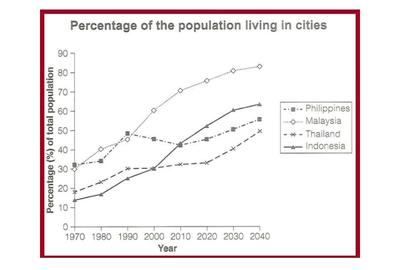- Home
- Practice Tests
- Indian Marriages Reading
IELTS Reading Passage
Objectives: to practice answering multiple-choice and short answer questions
In this IELTS reading passage, you practice:
- Multiple-Choice
- Short Answers
Indian Marriages
Marriage is one of the oldest human institutions and this is as true in Indian culture as anywhere else. In India marriage, called “Kanyadana" or “donating a virgin”, is thought of as the greatest sacrifice that a father can make and for the groom as an obligation to perpetuate his bloodline. Many people believe that a marriage is still binding after death.
In early times girls were thought to be ready for marriage after puberty and later even children could be married. Divorce and remarriage were not always possible. By Medieval times Marriage was compulsory for girls, who very often married between the ages of eight and nine. Among those able to afford it, polygamy was common and rulers would often have one wife from their own region and other minor wives from other areas. Now, divorce and remarriage is possible and non-Muslim Indian men can only have one wife.
Although are many regional variations, some features of the Indian wedding ceremony are similar throughout the country. In general weddings are very complicated events and involve long negotiations about dowry payments prior to the event. After this has been decided a day is chosen by asking an astrologer to find a lucky day. Preparations begin early because a marriage is not only one of the highlights a person’s life, but a large and complex social gathering to organize.
The night before, the bride, her friends and female relatives gather together for a party called a “mehendi”, where they paint each other’s hands and feet with Henna and dance and listen to music. Her guests often give the bride advice about married life and tease her about her future husband. Weddings are traditionally held at the bride’s home or in a temple, but parks, hotels and marriage halls are becoming increasingly popular. On the day a wedding altar or “mandapa” is built and covered in flowers. All of the wedding ceremony will be held in the altar.
The clothing a couple wear on their wedding day varies between regions and ethnic groups. Women most commonly wear a sari. The bride wears a lot of jewelry as this symbolizes the prosperity she will bring to her new family. In the South wearing flowers is common. The groom wears traditional costume or a suit. Turbans are also popular headgear.
The ceremony begins with a mixture of tumeric, sandlewood paste and oils being applied to the couples face and arms. In the past this was done to the whole body, but now it is only symbolic, with only a little being rubbed on. Then they are showered in flowers. After this they perform the rituals that will make them man and wife. First they garland each other and then take seven symbolic steps together representing seven gifts and seven promises.
Finally they say the vows and then they are legally married. The bride’s father or guardian takes her hands and puts them in her husband’s giving her to him. Now she is no longer a member of her father’s family, but a member of her husband’s. They then touch the feet of their elders for luck.
After the wedding ceremony, the couple go to the groom’s house. The bride should be careful to enter the house right foot first for luck. In the evening and late into the night the families and their guests celebrate with dancing, music and food.
IELTS Reading Passage - Questions:
Questions 1-3
Choose the correct answer from A – D.
1. In India weddings are …A a duty for the man to continue his family.
B thought to end at death.
C a duty for the father.
D seen asa benefit for the father.
2. Divorce and remarriage …
A are only possible for non-Muslims.
B were sometimes not possible in the past.
C have always been possible.
D have only become possible in modern times.
3. Indian weddings …
A are straightforward and brief.
B are thought to be lucky
C are intricate and time consuming.
D involve only the immediate family.
Questions 4-9
Complete the statements below. Use NO MORE THAN THREE WORDS.
- The evening prior to the wedding, the wife-to-be is given recommendations about .
- The wedding ceremony is conducted in a special .
- The gold and jewels the bride wears represent .
- These days, the materials applied to the face and arms at the start of the ceremony are just .
- After the wedding, the bride has left and belongs to her husband’s.
- It is important that the new bride goes into the new house with her .
IELTS Reading Passage - Answers
- A
- B
- C
- married life
- (wedding) alter / mandapa
- prosperity
- symbolic
- her father's family
- right foot first
1. In India weddings are …
A a duty for the man to continue his family.
B thought to end at death.
C a duty for the father.
D seen asa benefit for the father.
2. Divorce and remarriage …
A are only possible for non-Muslims.
B were sometimes not possible in the past.
C have always been possible.
D have only become possible in modern times.
3. Indian weddings …
A are straightforward and brief.
B are thought to be lucky
C are intricate and time consuming.
D involve only the immediate family.
4 The evening prior to the wedding, the wife-to-be is given recommendations about married life.
5 The wedding ceremony is conducted in a special (wedding) altar / mandapa.
6 The gold and jewels the bride wears represent prosperity.
7 These days the materials applied prior to the ceremony are only symbolic.
8 After the wedding, the bride has left her father’s family and belongs to her husband’s.
9 It is important that the new bride goes into the new house with her right foot first.
Finding the Answers
Indian Marriages
Marriage is one of the oldest human institutions and this is as true in Indian culture as anywhere else. In India marriage, called “Kanyadana or “donating a virgin”, is thought of as the greatest sacrifice that a father can make (1) and for the groom as an obligation to perpetuate his bloodline. Many people believe that a marriage is still binding after death.
In early times girls were thought to be ready for marriage after puberty and later even children could be married. (2) Divorce and remarriage were not always possible. By Medieval times Marriage was compulsory for girls, who very often married between the ages of eight and nine. Among those able to afford it, polygamy was common and rulers would often have one wife from their own region and other minor wives from other areas. Now, divorce and remarriage is possible and non-Muslim Indian men can only have one wife.
Although are many regional variations, some features of the Indian wedding ceremony are similar throughout the country. (3) In general weddings are very complicated events and involve long negotiations about dowry payments prior to the event. After this has been decided a day is chosen by asking an astrologer to find a lucky day. Preparations begin early because a marriage is not only one of the highlights a person’s life, but a large and complex social gathering to organize.
The night before, the bride, her friends and female relatives gather together for a party called a “mehendi”, where they paint each other’s hands and feet with Henna and dance and listen to music. Her guests often give the bride advice (4) about married life and tease her about her future husband.
Weddings are traditionally held at the bride’s home or in a temple, but parks, hotels and marriage halls are becoming increasingly popular. On the day a wedding altar or (5) “mandapa” is built and covered in flowers. All of the wedding ceremony will be held in the altar.
The clothing a couple wear on their wedding day varies between regions and ethnic groups. Women most commonly wear a sari. The bride wears a lot of jewelry as this symbolizes the (6) prosperity she will bring to her new family. In the South wearing flowers is common. The groom wears traditional costume or a suit. Turbans are also popular headgear.
The ceremony begins with a mixture of turmeric, sandalwood paste and oils being applied to the couples face and arms. In the past this was done to the whole body, but now it is only (7) symbolic, with only a little being rubbed on. Then they are showered in flowers. After this they perform the rituals that will make them man and wife. First they garland each other and then take seven symbolic steps together representing seven gifts and seven promises.
Finally they say the vows and then they are legally married. The bride’s father or guardian takes her hands and puts them in her husband’s giving her to him. Now she is no longer a member of (8) her father’s family, but a member of her husband’s. They then touch the feet of their elders for luck. After the wedding ceremony, the couple go to the groom’s house. The bride should be careful to enter the house (9) right foot first for luck. In the evening and late into the night the families and their guests celebrate with dancing, music and food.
Comments
Any comments or questions about this page or about IELTS? Post them here. Your email will not be published or shared.
Band 7+ eBooks
"I think these eBooks are FANTASTIC!!! I know that's not academic language, but it's the truth!"
Linda, from Italy, Scored Band 7.5











